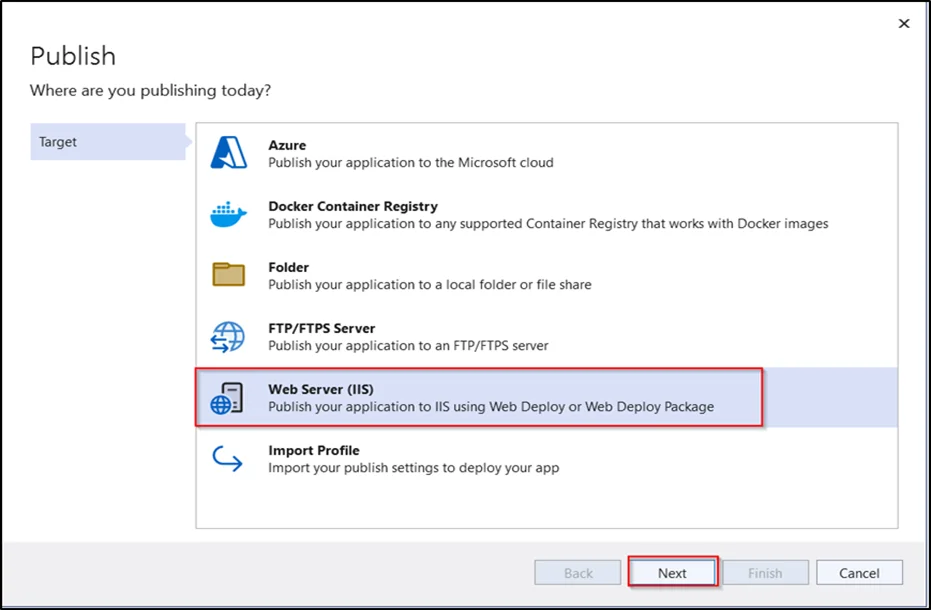|
Voiced by Amazon Polly |
Introduction
In today’s rapidly evolving software landscape, deploying and managing multiple .NET applications efficiently is crucial to maintaining a scalable and cost-effective infrastructure.
This introduction explores the benefits and strategies behind deploying multiple .NET applications on AWS Elastic Beanstalk.
We will delve into the key advantages of using AWS Elastic Beanstalk for .NET application deployment, how to structure your applications for seamless coexistence, and the best practices for optimizing resource utilization while ensuring the highest reliability and scalability.
By the end of this guide, you will clearly understand how to leverage AWS Elastic Beanstalk’s capabilities to orchestrate the deployment and scaling of multiple .NET applications, helping you streamline your development workflow and enhance the overall performance of your software solutions.
Pioneers in Cloud Consulting & Migration Services
- Reduced infrastructural costs
- Accelerated application deployment
Advantages
- Cost-Efficiency: One of the primary advantages of using AWS Elastic Beanstalk for deploying multiple .NET applications is cost-efficiency. AWS Elastic Beanstalk allows you to manage several applications within a single environment, reducing the overhead of managing separate resources for each application. This consolidation can save significant costs, especially for smaller projects or startups.
- Simplified Management: AWS Elastic Beanstalk provides a unified management console, making monitoring and managing multiple applications easier. You can view application logs, configure scaling options, and monitor performance from a single dashboard, streamlining the management process.
- Automatic Scaling: AWS Elastic Beanstalk offers automatic scaling capabilities, ensuring your applications can handle varying traffic levels. This feature is particularly advantageous when dealing with multiple applications, as it allows you to allocate resources dynamically based on demand, optimizing cost and performance.
- Load Balancing: AWS Elastic Beanstalk includes built-in load balancing, distributing incoming traffic evenly among multiple application instances. This enhances the fault tolerance and availability of your applications, reducing the risk of downtime.
Steps to Deploy Multiple .NET Applications in AWS Elastic Beanstalk
Step 1: AWS Account Setup
Ensure that you have an AWS account set up. If not, sign up for one.
Step 2: Create an AWS Elastic Beanstalk Environment
- Login to AWS Console: Log in to the AWS Management Console.

- Access AWS Elastic Beanstalk: Navigate to AWS Elastic Beanstalk from the AWS Console.

- Create a New Environment: Click “Create a new environment” and choose the appropriate platform (e.g., .NET) and application type.

- Environment Configuration: Deploying multiple applications in AWS Elastic Beanstalk does not necessitate any specific environment configuration. The sole prerequisite is to upload a manifest file into the AWS Elastic Beanstalk Environment. Any subsequent changes or additional requirements can be incorporated into the manifest file during the application deployment.
Step 3: Build .zip Deployment package of Application from Visual Studio
Generally, Visual Studio is used for the .Net Application Development. You can also build an AWS Elastic Beanstalk deployment package for multiple applications using dotnet CLI.
- Open your project in the Visual Studio.
- Click the “Build” option and open the example app for publishing.

- Then click on Web Server (IIS) and click on Next.

- In Specific target, select Web Deploy Package.

- In Publish, provide the output location where the zip will be created.

- Now, the Application is Ready to Publish

- It’ll get you a published application in the .zip file. Similarly, you have to publish the second application.
Step 4: Create a Manifest Configuration (JSON) file
AWS Elastic Beanstalk relies on its manifest file, which contains deployment specifications. In the configuration provided below, there are two applications: one is an ASP.NET Core application, which should be specified within the aspNetCoreWeb parameter, and the other is a traditional ASP.NET application running on the .NET Framework, which should be declared within the msDeploy parameter.
Note: the manifest file should be named aws-windows-deployment-manifest.json

Step 5: Create AWS Elastic Beanstalk Deployment Package:
AWS Elastic Beanstalk Deployment Package(.zip) consists of All the individual application’s zip files and manifest files, as you can see below:

Step 6: Deploy
Successful Deployment will give you no error and AWS Elastic Beanstalk health status as Green.
Output:


Conclusion
Deploying multiple .NET applications in a single AWS Elastic Beanstalk environment offers numerous advantages, including cost-efficiency, simplified management, automatic scaling, and load balancing. However, it also comes with challenges related to resource sharing and complexity. By following the steps outlined in this blog post and carefully considering the advantages and disadvantages, you can effectively leverage AWS Elastic Beanstalk to streamline the deployment and management of your .NET applications, ultimately leading to a more efficient and cost-effective development workflow.
Drop a query if you have any questions regarding AWS Elastic Beanstalk and we will get back to you quickly.
Making IT Networks Enterprise-ready – Cloud Management Services
- Accelerated cloud migration
- End-to-end view of the cloud environment
About CloudThat
CloudThat is an official AWS (Amazon Web Services) Advanced Consulting Partner and Training partner, AWS Migration Partner, AWS Data and Analytics Partner, AWS DevOps Competency Partner, Amazon QuickSight Service Delivery Partner, AWS EKS Service Delivery Partner, and Microsoft Gold Partner, helping people develop knowledge of the cloud and help their businesses aim for higher goals using best-in-industry cloud computing practices and expertise. We are on a mission to build a robust cloud computing ecosystem by disseminating knowledge on technological intricacies within the cloud space. Our blogs, webinars, case studies, and white papers enable all the stakeholders in the cloud computing sphere.
To get started, go through our Consultancy page and Managed Services Package, CloudThat’s offerings.
FAQs
1. How do I ensure isolation between multiple applications in the same environment?
ANS: – AWS Elastic Beanstalk provides isolation using environment variables, security groups, and configuration settings. To maintain isolation, you can also utilize different AWS resources, such as databases or storage.
2. What's the role of the manifest file in deploying multiple applications?
ANS: – The manifest file is essential for specifying deployment details for each application within the AWS Elastic Beanstalk environment. It helps define how each application is deployed and configured.
3. What happens if one application experiences a surge in traffic? Will it affect other applications in the same environment?
ANS: – AWS Elastic Beanstalk’s load balancer and auto-scaling capabilities can help mitigate the impact of traffic spikes on other applications by dynamically allocating resources to handle increased demand.

WRITTEN BY Kashyap Nitinbhai Shani
Kashyap Nitinbhai Shani is a Research Associate at CloudThat. He is interested to learn advanced technologies and gain insights into new and upcoming cloud services. He likes writing tech blogs and learning new languages.


 Login
Login


 September 20, 2023
September 20, 2023 PREV
PREV









Comments